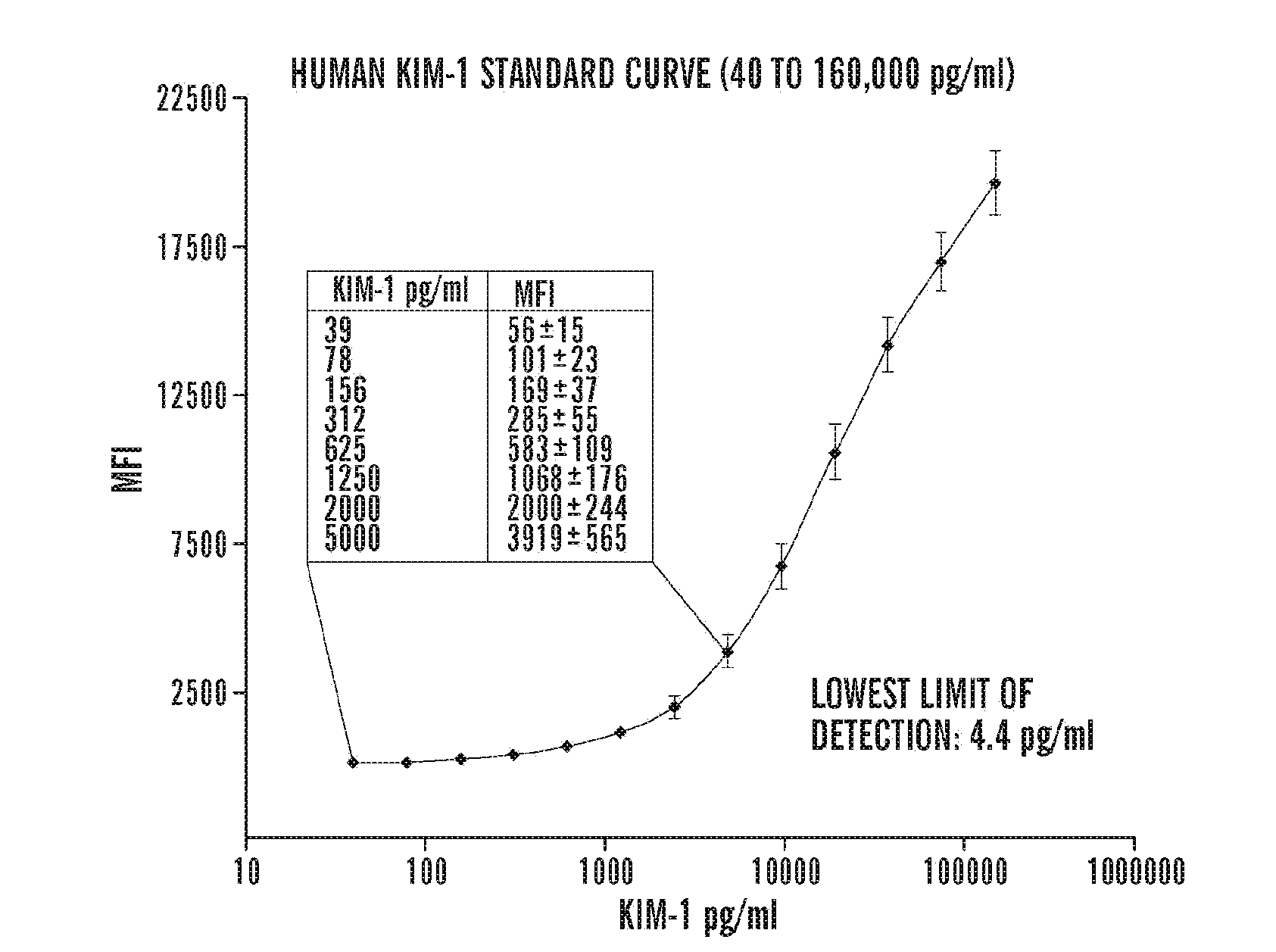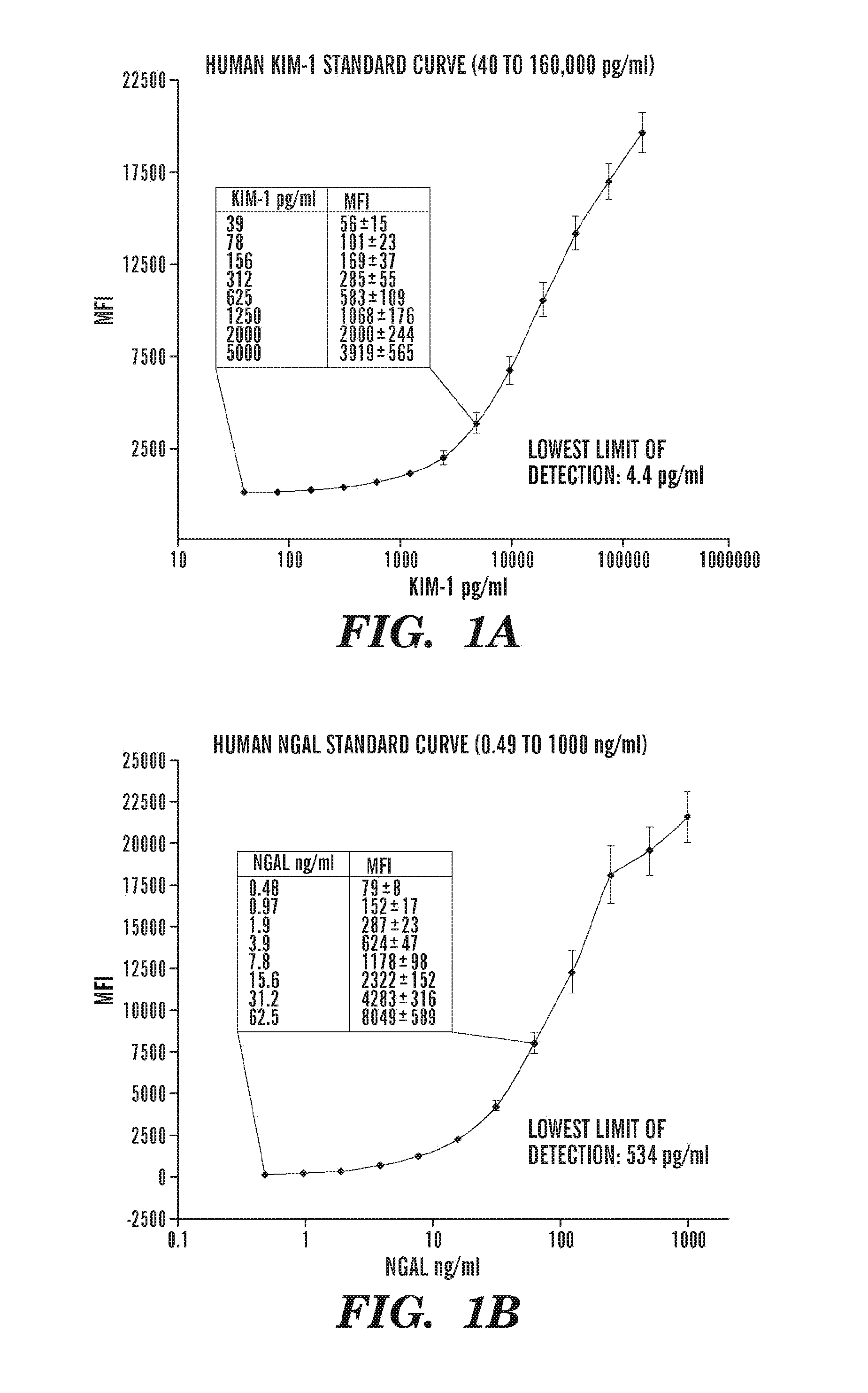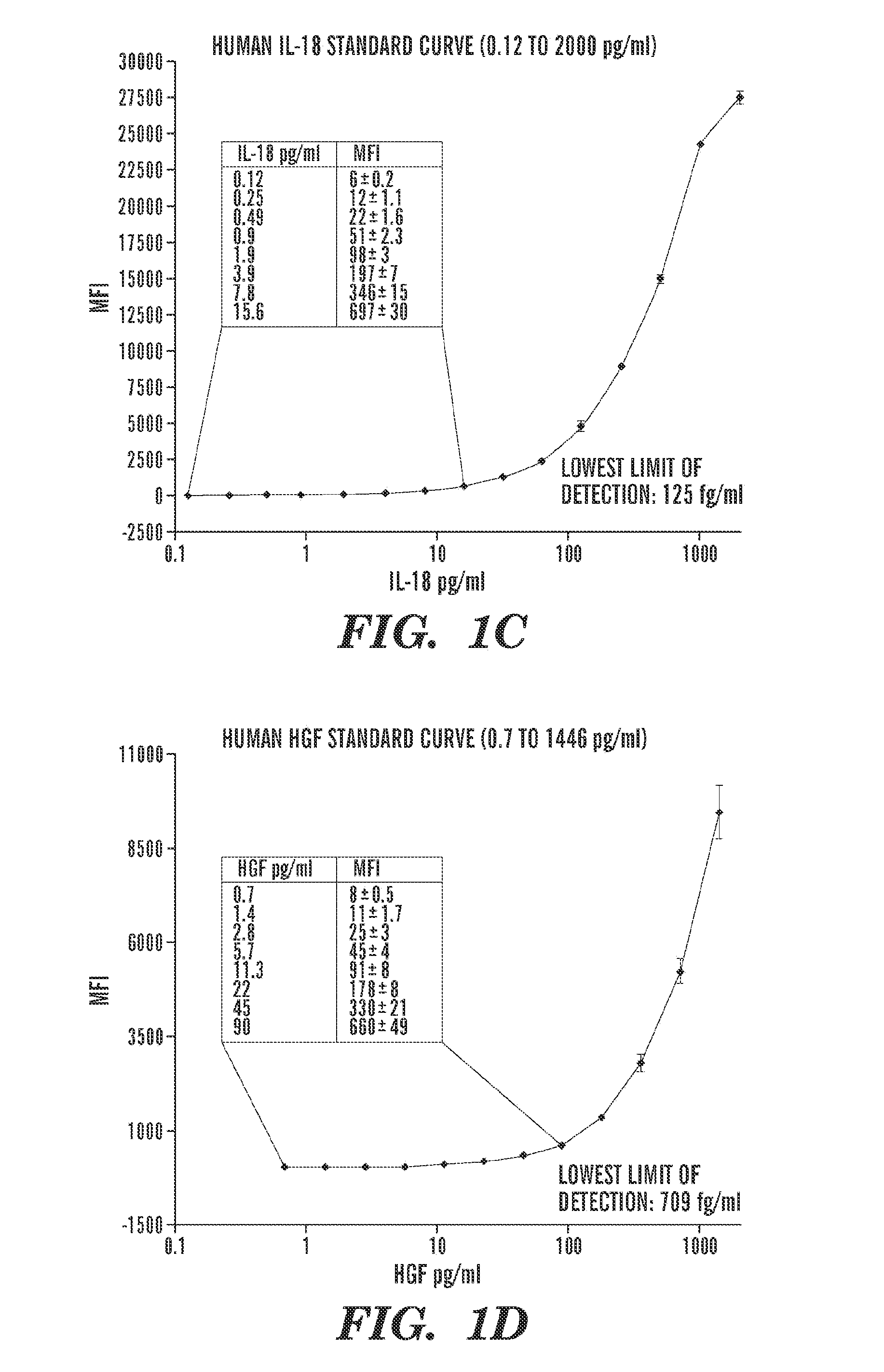Urinary biomarkers for sensitive and specific detection of acute kidney injury in humans
a kidney injury and biomarker technology, applied in the field of urinary biomarkers for sensitive and specific detection of acute kidney injury, can solve the problems of preventing the development of therapeutic strategies to preventing the development of drugs and therapies that may improve the devastating outcome of aki, permanent kidney damage or even death, etc., to facilitate the distinction of kidney infection
- Summary
- Abstract
- Description
- Claims
- Application Information
AI Technical Summary
Benefits of technology
Problems solved by technology
Method used
Image
Examples
example 1
Selection of Participants
[0122]Patients with documented AKI of at least the “Risk” category of the RIFLE criterion (Bellomo et al., 227 J. Immunol. Meths. 41-52 (1999)) (peak SCr >50% increase over admission value or known baseline) were recruited from the inpatient nephrology consultation service. Causes of AKI were obtained by detailed chart review including the treating nephrologist's consultation note and evaluation of laboratory data by a co-author not involved in the patients' care (SSW). Individuals without AKI were selected from three distinct populations: healthy volunteers, patients undergoing cardiac catheterization, and patients admitted to the intensive care unit. Healthy volunteers were excluded if they reported a recent hospitalization, diagnosis of chronic kidney disease, or treatment with nephrotoxic medications (non-steroidal anti-inflammatory drugs were allowed). Patients undergoing cardiac catheterization and those admitted to the intensive care unit were include...
example 2
Development and Evaluation of Micro-Bead Based Assay for Urinary Biomarker Quantitation
[0125]Coupling of the beads to respective capture antibodies: The microbead based assays for KIM-1 and NGAL were developed and evaluated in this study using an amine coupling Kit from Bio-Rad whereas microbead assays for HGF, IL-18, VEGF, and IP-10 were commercially available from Bio-Rad laboratories.
[0126]Evaluation of the assay: The performance characteristics of the microbead based assay was evaluated in the same way as the Kim-1 ELISA (Vaidya et al., 290 Am. J. Physiol. Renal. Physiol. F517-29 (2006)), by measuring the sensitivity, assay range, specificity, reproducibility, recovery, and interference (Table 1, below). The sensitivity or the lowest limit of detection (LLD) was determined by diluting the respective standard in sample diluent; the concentration which is two standard deviations above the background “sample diluent alone” was determined to be the LLD. The analytical recovery in co...
example 3
Urinary Biomarkers in Individuals with and without Acute Kidney Injury Quantitation of Biomarkers
[0129]The microbead based assays for KIM-1 and NGAL were developed and evaluated in this study whereas all other biomarker assays were commercially available. The sensitivity, specificity, precision profile, recovery, interference and dilutional linearity for each assay were extensively evaluated and were within the acceptable range (Table 1).
TABLE 1Evaluation of assays to measure biomarkers for acute kidney injury.CystatinParametersKIM-1NGALIL-18HGFVEGF1P-10CNAGProteinAssayMBSMBSMBSMBSMBSMBSLBBTESBCASBCPrincipleELISAELISAELISAELISAELISAELISALLD4.4 pg / ml0.53 ng / ml0.125 pg / ml0.709 pg / ml10 pg / ml32 pg / ml0.043 mg / L0.2 U / L0.011Assay40-1600000.49-10000.12-20000.7-14467.8-31,98225-10,0000.043-27.20.2-52.90.01-2Rangepg / mlng / mlpg / mlpg / mlpg / mlpg / mlmg / lU / Lmg / mlIntra assayInter assayRecovery85%-100%85%-100%85%-110%85%-110%85%-110%85%-110%90%-100%90%-100%90%-100%Linearity1:2,1:10,1:10,1:2,1:5,1:20,1:...
PUM
 Login to View More
Login to View More Abstract
Description
Claims
Application Information
 Login to View More
Login to View More - R&D
- Intellectual Property
- Life Sciences
- Materials
- Tech Scout
- Unparalleled Data Quality
- Higher Quality Content
- 60% Fewer Hallucinations
Browse by: Latest US Patents, China's latest patents, Technical Efficacy Thesaurus, Application Domain, Technology Topic, Popular Technical Reports.
© 2025 PatSnap. All rights reserved.Legal|Privacy policy|Modern Slavery Act Transparency Statement|Sitemap|About US| Contact US: help@patsnap.com



